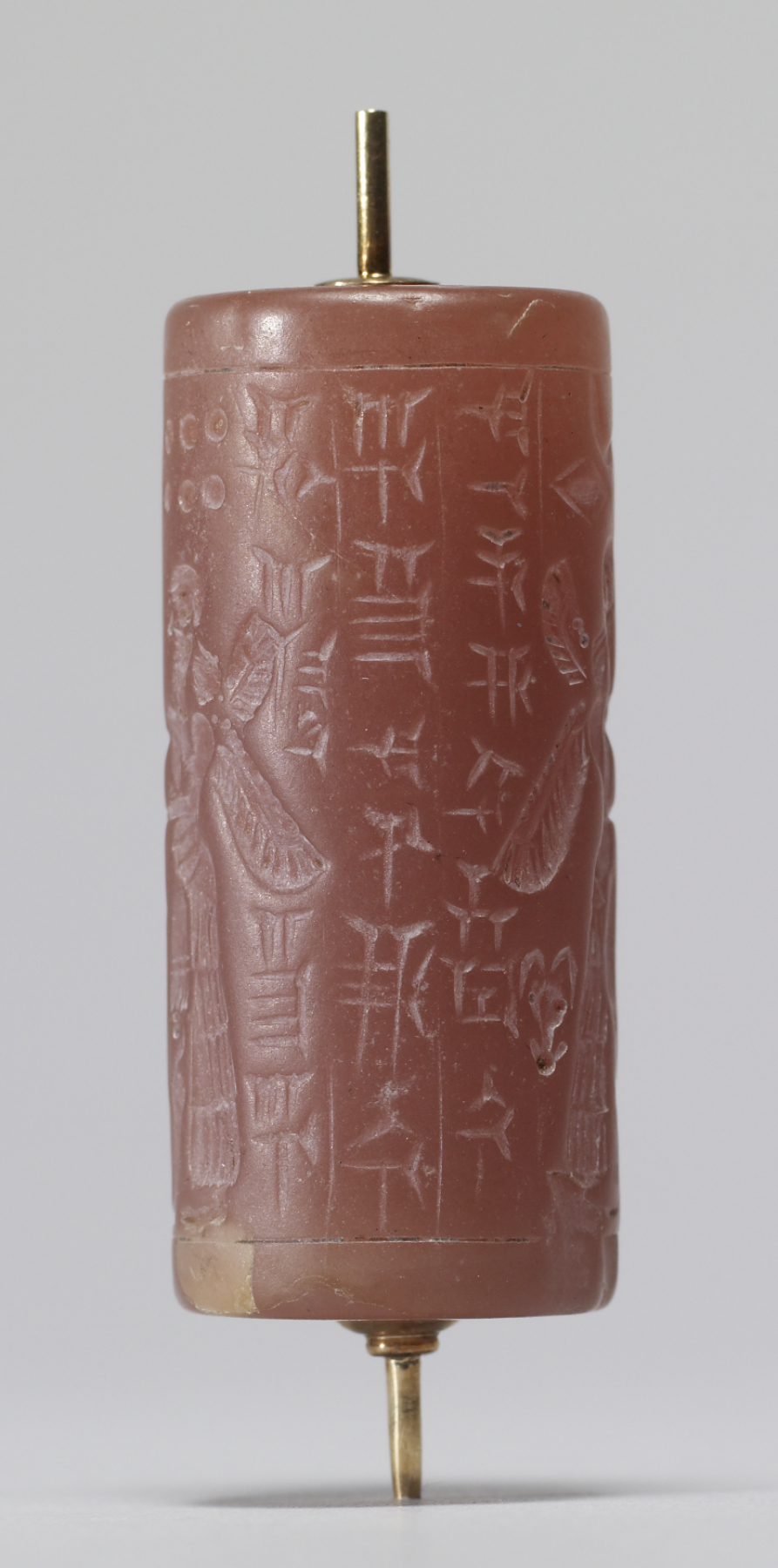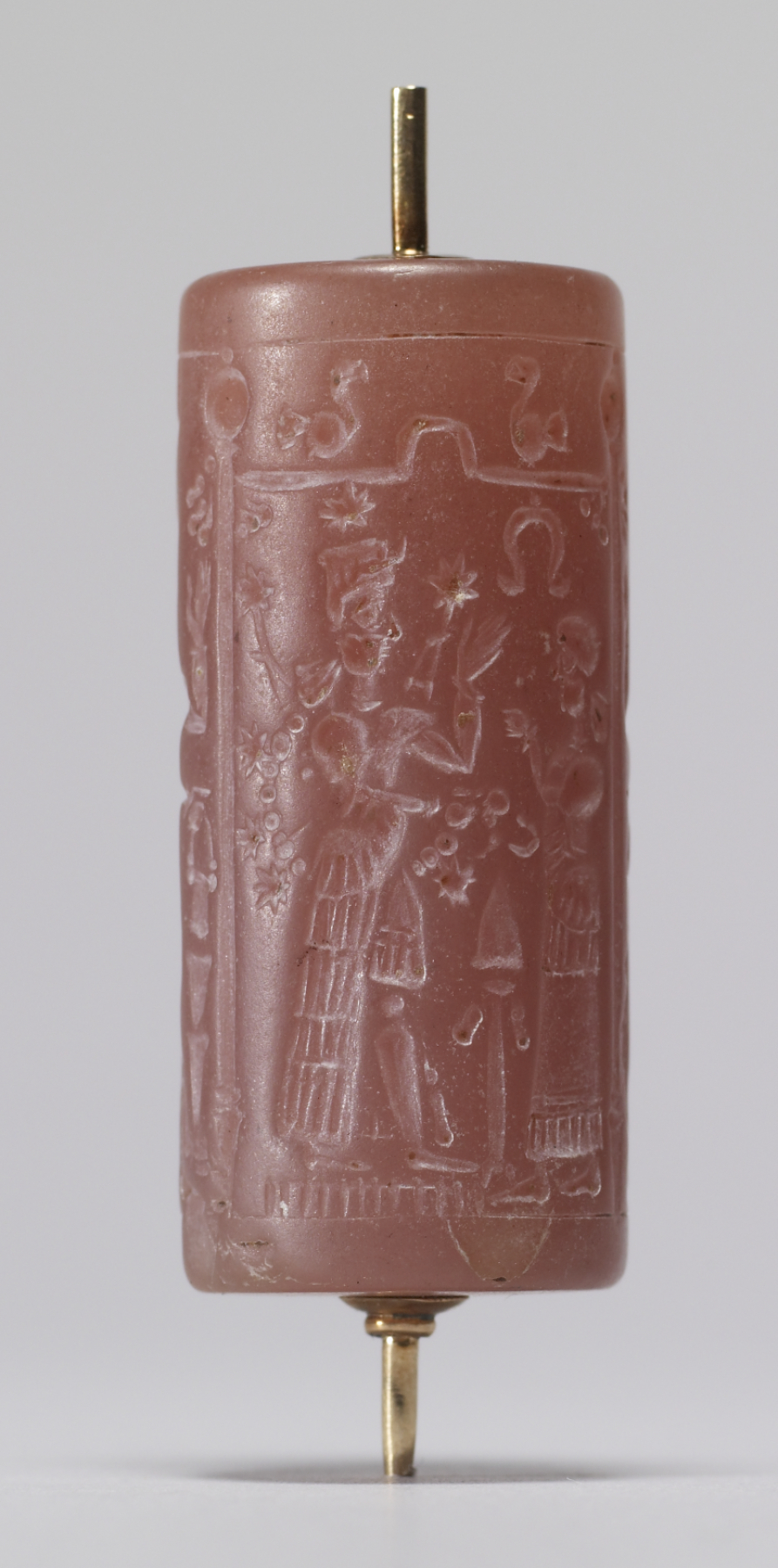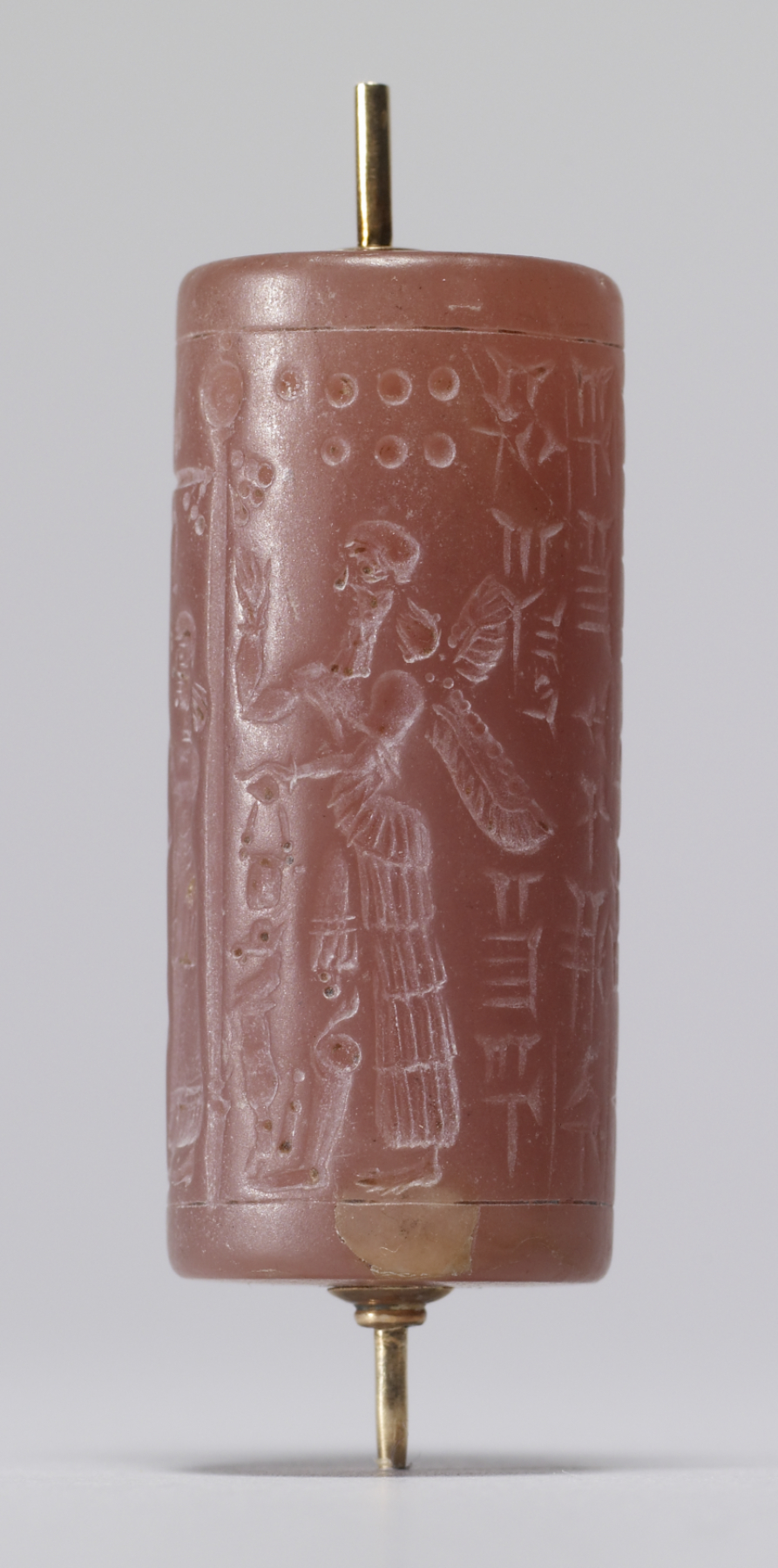Cylinder Seal with a Cultic Scene
(Ancient Near East )
This seal scene features a worshipper under a canopy. They face a deity, possibly Ishtar, goddess of fertility, who sits on a raised platform. Two winged genii (protective deities) hold ceremonial buckets and flank the central scene. Divine astral symbols appear above. A three-line inscription gives the name and titles of the owner: "Seal of Nabu-nurka-lamur, superintendent of Ahu-shamshi, the palace herald." The finely drilled style of this seal dates it to the 9th or 8th century BCE.
Cylinder seals are cylindrical objects carved in reverse (intaglio) in order to leave raised impressions when rolled into clay. Seals were generally used to mark ownership, and they could act as official identifiers, like a signature, for individuals and institutions. A seal’s owner rolled impressions in wet clay to secure property such as baskets, letters, jars, and even rooms and buildings. This clay sealing prevented tampering because it had to be broken in order to access a safeguarded item. Cylinder seals were often made of durable material, usually stone, and most were drilled lengthwise so they could be strung and worn. A seal’s material and the images inscribed on the seal itself could be protective. The artistry and design might be appreciated and considered decorative as well. Cylinder seals were produced in the Near East beginning in the fourth millennium BCE and date to every period through the end of the first millennium BCE.
Inscription
Provenance
Provenance (from the French provenir, 'to come from/forth') is the chronology of the ownership, custody, or location of a historical object. Learn more about provenance at the Walters.
Henry Walters, Baltimore, [date and mode of acquisition unknown]; Sadie Jones (Mrs. Henry Walters), New York, 1931, by inheritance; Joseph Brummer, Paris and New York, 1941, by purchase; Walters Art Museum, 1942, by purchase.
Conservation
| Date | Description | Narrative |
|---|---|---|
| 6/4/1968 | Treatment | other |
Geographies
Mesopotamia (Place of Origin)
Measurements
H: 2 3/8 x Diam: 3/4 in. (6.1 x 1.8 cm)
Credit Line
Museum purchase [formerly part of the Walters Collection], 1942
Location in Museum
Accession Number
In libraries, galleries, museums, and archives, an accession number is a unique identifier assigned to each object in the collection.
In libraries, galleries, museums, and archives, an accession number is a unique identifier assigned to each object in the collection.
42.1194












